What is breast reduction?
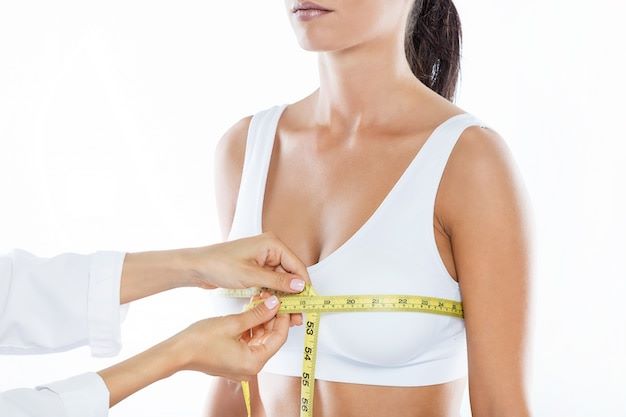
Breast reduction drops the size of the breasts by removing extra skin, fat, and breast tissue. This surgery is commonly done on women who have enormous, heavy breasts as well as discomfort, back pain, neck pain, and other physical complaints. The surgeon will make incisions on the breasts during the treatment to remove any extra skin, fat, and tissue.

Moreover, the areolas and nipples may be relocated to a more visually attractive spot on the breast. The incisions will be stitched, and the patient will be given instructions on how to care for the incision areas while recovering. It may take many weeks after breast reduction surgery. Patients are advised to avoid intense exercise and to wear a supportive bra during this time. After the treatment, most patients have some pain, swelling, and bruising, but these symptoms may be controlled with medicine and rest. Despite the fact that breast reduction surgery is usually viewed as beneficial and safe, there are hazards to be aware of.
Changes in nipple feeling, bleeding, infections, scars, and other problems may occur. Before determining whether to have breast reduction surgery, patients should consult with a board-certified plastic surgeon about the pros and risks.
What should be considered in breast reduction surgeries?
Large, heavy and drooping breasts in women can cause neck-shoulder-back pain, compression of bra straps in the shoulder area, rash and even sores under the breasts, and hygiene disorders.
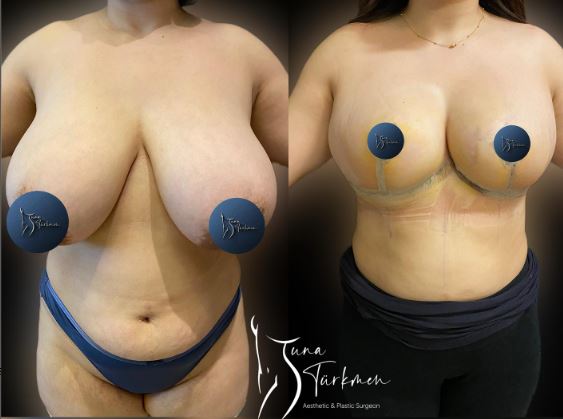
In such cases, sagging and excess weights in the breasts can be removed with breast reduction surgery and improvement in such complaints of the person can be aimed. At the same time, an aesthetic appearance is created by lifting the breast. In this way, the person can use more comfortable bras and will be more free in choosing clothes. Breast reduction surgery can be performed with different incision shapes.


The techniques that can be applied to the person are presented and planning is made considering the weight, sagging and skin quality of the breast. Sometimes in the presence of breast-fat tissue extending to the armpit area, its application in combination with liposuction makes it possible to achieve better aesthetic results.
Large, heavy and drooping breasts in women can cause neck-shoulder-back pain, compression of bra straps in the shoulder area, rash and even sores under the breasts, and hygiene disorders.
After the operation, suitable bras should be used for 2-4 weeks. Post-operative pain is mild and can be easily controlled with painkillers.
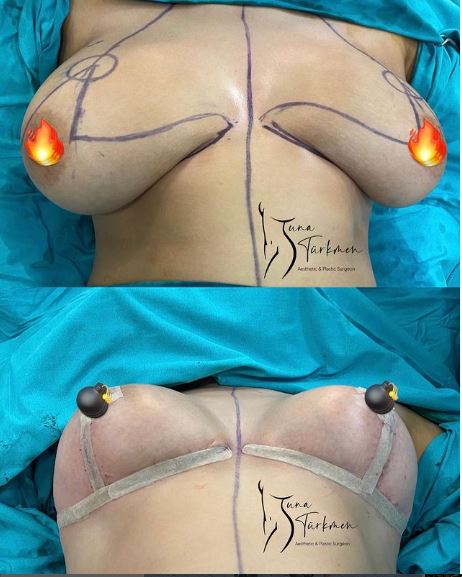
What are pros and cons of breast reduction?
While breast reduction has some advantages, it also has some disadvantages. Here are some of the advantages and disadvantages of breast reduction:
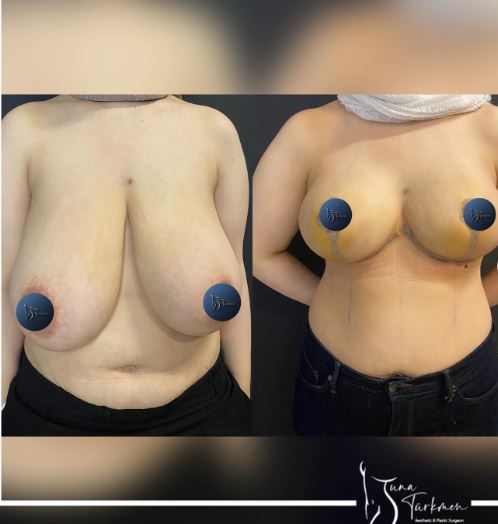
Big breasts can cause physical pain, such as back, neck, and shoulder pain, as well as skin irritation and rashes. Breast reduction can alleviate these issues.
Breast reduction patients frequently report an enhanced quality of life, including greater self-esteem, confidence, and body image.
Big breasts can make exercise difficult, especially high-impact activities like running. Exercise can be made more pleasant and enjoyable with breast reduction.
It can be difficult for women with big breasts to find clothes that fits properly and feels comfortable. Breast reduction can give additional wardrobe and lingerie alternatives.
Breast reduction surgery, like any other, has hazards such as bleeding, infection, and scars.
Some women may report a temporary or permanent loss of nipple and breast sensitivity.
Breast reduction surgery may impair a woman's ability to breastfeed in the future.
Breast reduction surgery is costly and may not be reimbursed by insurance.
Some women, particularly those who have had enormous breasts for a long time, may have emotional adjustment following breast reduction surgery.
Before making a choice, it is critical to examine the potential advantages and cons of breast reduction with your surgeon. Your surgeon can advise you on whether breast reduction is the best option for you depending on your specific requirements and circumstances.
Who are eligible for breast reduction?
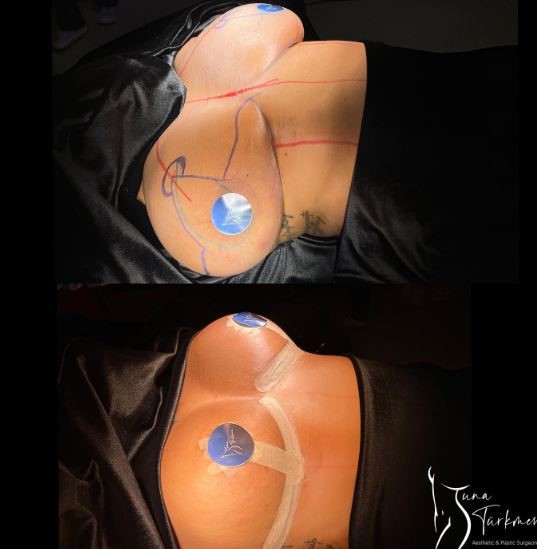
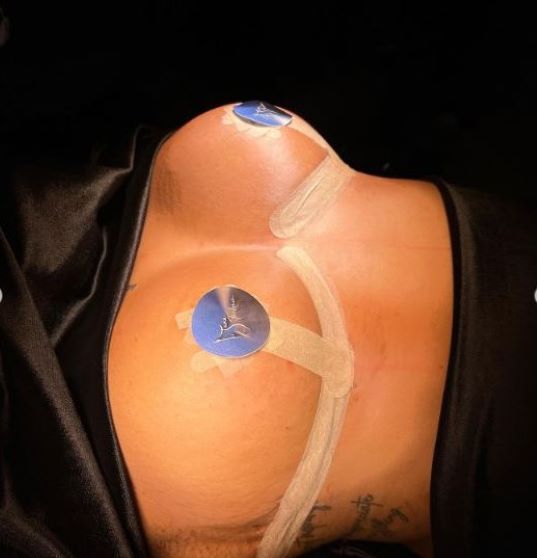
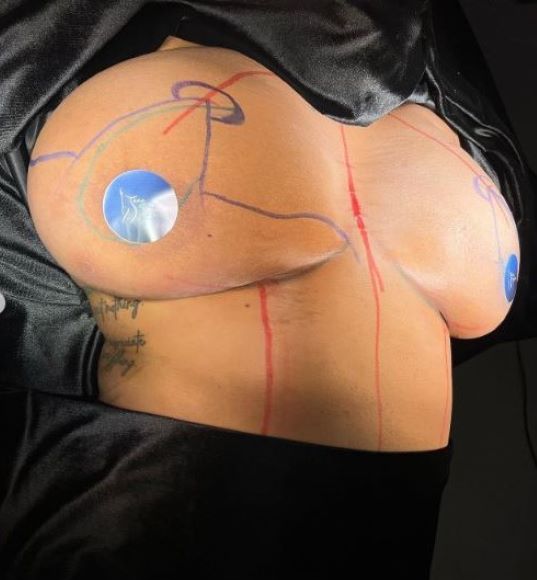
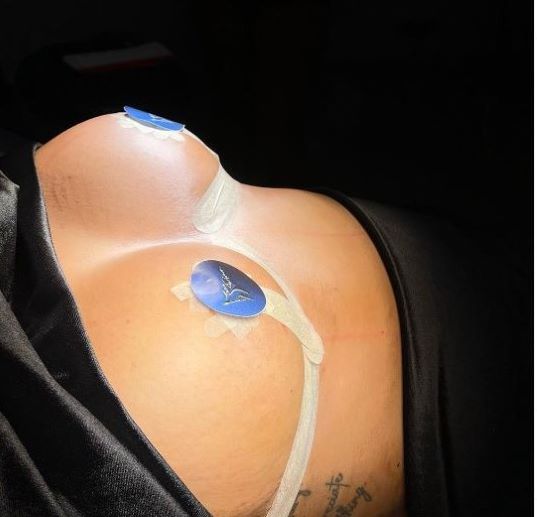
Breast reduction surgery is often suggested for women with very big breasts, also known as macromastia, which can cause a variety of medical and emotional issues.
Some of the most prevalent causes for breast reduction are as follows below. However, every case is different, and the choice to have breast reduction surgery should be taken in conjunction with a trained plastic surgeon. They can assess if breast reduction surgery is right for you based on your medical history, physical examination, and other criteria.
- Breast weight causes chronic neck, back, and shoulder pain.
- Rashes or skin irritation beneath the breasts.
- Due to breast size, it is difficult to participate in physical activities or exercise.
- Inadequate posture or spinal alignment.
- Migraines or chronic headaches.
- Finding correctly fitted garments or bras is difficult.
- Breast size causes self-consciousness or discontent.
- The general state of health should be good.
- The patient must be over the age of 18 and must stand in front of a mirror to assess the state of his breasts. Breast reduction aesthetics (boobs huge reduction) is required if the tip of the breast has dropped below the fold line under the breast.
How to prepare for breast reduction surgery?
The patient is questioned, and an examination and measurements are performed.
The patient is informed about the operation's complications and hazards. The allergy status, chronic conditions, and medications taken are all disclosed to the doctor.
The topic of combination surgery is examined.
The patient informs the physician if he or she want to have one of the other cosmetic surgical procedures performed concurrently with the breast reduction surgery. If the doctor believes it is necessary, combined surgery can be conducted.
The usage of medications that the doctor does not wish to be used is stopped.
The doctor will discontinue the usage of blood thinners or anti-bleeding medications. Herbal supplements and teas should also be avoided for a period.
Food eating should be halted.
Stomach contents may restrict the windpipe during surgery. As a result, it is vital to arrive hungry for surgery. Fasting for 8 hours is adequate.
You should not smoke for 15 days before to the procedure.
Smoking slows wound healing, lowers blood oxygen levels, impairs immunity, and promotes infection. In this regard, if feasible, smoking should be discontinued totally; otherwise, smoking should be discontinued prior to surgery.
Mammography and ultrasound exams are carried out.
The breast is scanned in order to compare photos taken before and after surgery roughly a year later. A cyst is removed if it is discovered during imaging.
How is performed breast reduction surgery?
Breast reduction surgery involves lifting the drooping nipple and removing breast tissue, fat, and skin from the enlarged breasts. As a consequence, an aesthetically pleasing picture arises. Breast reduction surgery employs a variety of procedures. The lollipop and inverted T techniques are often used. Breast reduction surgery information is provided below.
Blood tests are conducted on patients who arrive at the hospital around 2 hours before the procedure, and photographs of the breast are obtained. It analyzes the anatomy and size of the breast, as well as the location of the nipple, to establish the surgical procedure.
Markings are drawn on the patient's breast with a pencil to establish where the incision will be made. Drawings are done standing up rather than lying down because the size disparities between the breasts are more visible and the ultimate point of the nipple is more clearly identified owing to the drooping of the breast caused by gravity.
General anesthesia is administered. Because of the anesthetic effect, no pain is felt during the procedure.
Incisions are done on the breast according to the procedure determined by the physician (More detailed information about the methods is below).
The quantity of fat, breast tissue, and skin taken from the breast to give an attractive look (upright nipple and tiny breast) is sutured, and the incisions are closed.
A drain is used to absorb blood and other fluids during surgery on individuals with exceptionally big breasts. The breast has been wrapped.
The doctor advises or wears a sports bra that covers the breasts while applying mild pressure on them. The breast reduction procedure takes roughly 2 hours, depending on the intricacy of the operation and the technique used. Patient stays at hospital one day. The names of the medications to be used are given to the patient, and a prescription is issued.
Following the operation, information is provided. A control examination is scheduled for the patient. The patient is released the next day following the procedure.
The following are the most popular breast reduction surgery procedures and characteristics. Methods of breast reduction that are often used are as shown below.
- Lejour (With lollipop incision)
A circular incision is created in the nipple region. Simultaneously, another straight incision is made downward. It acquired its name from the shape, which resembles a lollipop.
This method of creating an incision is ideal for decreasing breasts that are not too big. Sagging may develop after the procedure if the larger breasts are insufficient in lowering breast size.
The quantity of fat, breast tissue, and skin taken from the opening incision is determined by the physician, and the skin is closed.
- Breast reduction using T-shaped test incision
It is appropriate for breast reduction in all breast structures. As a result, it is a widely used procedure.
A horizontal incision is created in the lower fold of the breast in addition to the incisions produced in the lollipop incision procedure.
When compared to the Lejour approach, it is possible to remove a greater quantity of mass.
- Surgery with the graft procedure
When the veins and nerves feeding the nipple are not protected when this procedure is used, they lose function.
It is used for reducing abnormally big breasts known as monster breasts.
This procedure causes damage to the milk ducts. In this regard, it is particularly useful for older individuals who will not require nursing.
Because the milk ducts are not protected, the breast might be reduced to very tiny proportions.


Heavy, big-sized, and saggy breasts in women can cause neck, shoulder, and back pain, compression of bra staps in the shoulder area, and a rash under the breasts with hygiene problems. Breast reduction surgery helps with enhanced quality of life, including confidence and body image.
What should I do after breast reduction surgery?
You will usually be watched in a recovery facility after breast reduction surgery until you are awake and stable enough to go home. You will need to plan for transportation home and someone to accompany you for the first 24 hours following the procedure.
You may suffer discomfort, swelling, and bruising in the breast region in the days following surgery. This is usually treatable with pain medicine and rest. To offer support and minimize swelling, you will be encouraged to wear a surgical bra or compression garment.
To ensure a smooth and effective recovery, carefully follow your surgeon's post-operative recommendations. This may involve refraining from intense activities, heavy lifting, and exercise for many weeks following surgery, as well as taking antibiotics or other drugs as advised.
You will also need to see your surgeon for follow-up sessions to assess your progress and ensure that your breasts recover properly. Your surgeon may also advise you on scar care and other post-operative care procedures.
Breast reduction surgery should have long-term outcomes, such as a reduction in breast size, enhanced breast form, and alleviation from any physical discomfort or suffering associated with big breasts.
Following a hair transplant, it is critical to carefully follow your doctor's post-operative recommendations to ensure adequate healing and the procedure's success. Following are some general guidelines:
To enable your body to heal, it is suggested that you avoid strenuous activities or exercise for at least a week after the treatment. Swimming, saunas, and steam rooms should also be avoided for a few weeks.Touching or scratching the transplanted area might destroy the new hair follicles and negatively impact the procedure's success. For at least a few days following the surgery, avoid touching or scratching the region. After the operation, your doctor will most likely give you specific instructions on how to clean your scalp. To avoid infection and enhance recovery, carefully follow these directions. Your doctor may give medication to aid with pain, swelling, and infection prevention. Take these drugs as directed and do not discontinue them without first visiting your doctor. Because alcohol and smoking might interfere with recovery, it is best to avoid them for a few weeks following the treatment. It takes time for the transplanted hair to grow and show effects. To track the development of your hair growth, you must be patient and follow up with your doctor.
Frequently asked questions
How much does breast reduction cost in Turkey?
Breast reduction cost can vary based on a variety of factors, including the surgeon's expertise and reputation, the intricacy of the treatment, and the facility's location and quality. Nonetheless, as compared to many other nations, the cost of breast reduction surgery in Turkey is often less expensive. Breast reduction surgery in Turkey might cost anywhere from $2,500 and $4,500 USD on average. The surgeon's charge, anesthetic, and hospital or clinic expenses are frequently included in this cost. Nevertheless, pre-operative consultations, follow-up visits, medicines, and compression garments may incur additional charges. It is critical to remember that cost should not be the sole consideration when selecting a surgeon or facility for breast reduction surgery. The surgeon's expertise and credentials, the quality of the facility and equipment, and the surgeon's and facility's reputation are all crucial aspects to consider. Before having any surgical operation, including breast reduction surgery, it is critical to conduct extensive research on possible surgeons and facilities, as well as meet with the surgeon to address any concerns or questions you may have. Please contact us to learn our current breast reduction cost.
Is breast reduction surgery safe in Turkey?
Search for board-certified plastic surgeons with a good reputation and a lot of favorable patient feedback. Also, ensure that the institution is accredited and satisfies international safety and quality of care requirements. Breast reduction surgery is a frequent and safe technique in Turkey, as long as it is conducted in a reputable and recognized hospital or clinic by a trained and experienced cosmetic surgeon. Because of its high-quality facilities and competent doctors, Turkey is a popular destination for medical tourism, including cosmetic surgery. Nonetheless, there are potential hazards associated with any surgical operation. Problems might emerge from either the operation or the anesthetic. Infection, hemorrhage, scarring, asymmetry, loss of nipple sensitivity, and issues associated to anesthesia are all potential dangers of breast reduction surgery. These risks can be reduced by selecting a trained and experienced surgeon, carefully following pre-operative instructions, and adhering to post-operative care recommendations. Before undertaking any surgical operation, including breast reduction surgery in Turkey or abroad, it is critical to extensively study possible physicians and facilities.
Finally, for patients who take the required measures and pick a trained and experienced surgeon at a reputed hospital, breast reduction surgery in Turkey can be safe and successful. To get the greatest possible outcome, it is critical to discuss any concerns or questions with the surgeon and follow their particular recommendations for your unique situation.
Are breast reduction scars permanent?
Breast reduction surgery is making incisions in the breasts to remove extra tissue, skin, and fat in order to shrink and contour the breasts. Breast reduction surgery, like any surgical operation, can leave scars, although the length and look of the scars may vary based on a number of factors.
The style and length of incision used during breast reduction surgery might vary based on the particular demands of the patient and the surgeon's discretion. The anchor incision, lollipop incision, and periareolar incision are all popular types of incisions used in breast reduction surgery. The anchor incision is the most often utilized style of incision in breast reduction surgery, leaving a scar around the areola, a vertical scar from the areola to the breast crease, and a horizontal scar along the breast crease.
Breast reduction scars are usually permanent, however they diminish with time and can be disguised beneath clothing or a swimsuit. Scars are usually red and elevated in the first few months following surgery, but they diminish and flatten over the course of several months to a year.
It is crucial to remember that the size and look of scars can vary based on a variety of circumstances, including the patient's skin type and the surgical method employed. After surgery, your surgeon will give you advice on how to properly care for your incision sites, which may include avoiding sunlight, wearing compression garments, and massaging the scars to help them heal correctly.
Generally, breast reduction surgery will leave scars, but with good care and time, the size and look of the scars can be decreased. Before to the treatment, you should discuss any concerns or questions you have concerning scarring with your physician.
Does breast reduction surgery hurt?
Breast reduction surgery, like any other operation, can cause discomfort and suffering during recuperation. The intensity of discomfort, however, might vary based on the individual and the surgical procedure employed. Often, your surgeon may prescribe pain medication to assist control any discomfort or pain that may occur following surgery. To keep ahead of the pain and manage any discomfort, it is critical to take the medicine as advised. Pain intensity varies from person to person, however most patients suffer pain and discomfort for a few days to a week after the treatment. The pain and discomfort should progressively subside after the initial healing phase. Swelling and bruising are frequent side effects after breast reduction surgery, and they can lead to discomfort and agony. To assist minimize swelling and discomfort, your surgeon may suggest ice packs or compression garments. It is critical to adhere to your surgeon's post-operative care instructions in order to reduce pain and suffering throughout recovery. This may involve refraining from heavy lifting or intense exercise for a period of time following the procedure. While there may be some pain and discomfort during the healing time after breast reduction surgery, most patients find that the benefits far surpass any momentary discomfort. Discuss any concerns or questions you have with your surgeon to ensure you are completely educated about what to expect before and after the surgery.
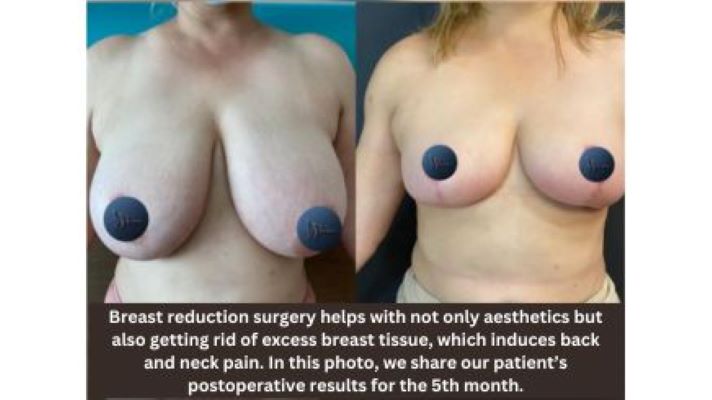
What are the symptoms of large breast?
Breast enlargement, also known as macromastia, can produce a variety of physical and emotional issues. There are some typical symptoms of big breasts. Excessive breast weight can cause persistent pain in the upper body, especially the back, neck, and shoulders. Big breasts can contribute to bad posture, which can cause additional pain and discomfort in the neck and back. Because of continual rubbing and sweating, the skin under and between the breasts can get irritated and develop rashes or infections. Big breasts can make physical activity difficult since they bounce and create pain during exercise. Tight bra straps can leave grooves or indentations in the shoulders due to the weight of heavy breasts. Big breasts can lead to feelings of self-consciousness, low self-esteem, and humiliation.
If you are suffering any of these symptoms, you should consult with a board-certified plastic surgeon about breast reduction surgery. Breast reduction surgery can ease these problems by lowering breast size and weight, increasing physical and emotional well-being.
Why is my stomach bigger after breast reduction?
It is unusual for the stomach to grow larger following breast reduction surgery. In reality, most patients have no noticeable changes in their abdomen area as a result of breast reduction surgery. Breast reduction surgery removes extra breast tissue and skin, reducing the overall weight and size of the breasts. This reduction in breast size can actually enhance the appearance of the abdomen by improving body proportions and making the waistline appear smaller in respect to the breasts.
It is crucial to remember, however, that each patient's body is unique and may react differently to surgery. Some individuals may have minor swelling or changes in body form immediately following surgery, but these changes are normally transitory and will go away as the body recovers. Before to the treatment, you should address any concerns or questions you have regarding the potential repercussions of breast reduction surgery with your surgeon. Your surgeon may give you a more complete description of the expected outcome as well as any risks or issues.
Do you still have nipples after a breast reduction?
After a breast reduction procedure, most patients retain their nipples. Typically, the surgeon may remove extra breast tissue and skin, contour the remaining breast tissue, and relocate the nipple to a more aesthetically acceptable spot during the treatment. In certain situations, the surgeon may need to remove and relocate the nipple as a graft if the breasts are particularly big or the quantity of tissue removed is enormous. This is known as a free nipple transplant, and it entails entirely separating the nipple and areola from the breast tissue and reattaching them in a new place. The patient will have no feeling in the nipple or areola in this situation, and nursing may be impossible.
Most breast reduction operations, on the other hand, do not necessitate a free nipple transplant, and the nipple and areola remain linked to the breast tissue. The nipple is usually repositioned by the surgeon so that it is centered on the newly shaped breast and in proportion to the rest of the breast. Most patients retain feeling in the nipple and areola, and nursing may still be viable following surgery. It is critical that you and your surgeon discuss the specifics of your breast reduction operation, including any concerns or questions you may have concerning the nipple and areola. Your surgeon may go through the surgery and the predicted outcome with you in further detail.
How can I get a breast reduction without surgery?
Depending on your specific needs and tastes, there are certain alternatives to breast reduction surgery that you should explore. Exercise can help improve posture and ease some of the discomfort associated with big breasts by strengthening the muscles in the chest, back, and shoulders. Exercise, on the other hand, is unlikely to appreciably diminish breast size. Losing weight may help lower the size of your breasts if your breast size is attributable in part to excess weight. Sitting up straight, utilizing ergonomic chairs and cushions, and doing yoga or Pilates might help relieve some of the back and neck pain associated with big breasts. Customized bras or bracing systems designed to disperse the weight of the breasts may alleviate pain. In certain situations, some drugs, including birth control pills, may help reduce breast size. Some drugs, however, may have negative effects and should be reviewed with a healthcare expert. It is crucial to remember that these solutions may not be as efficient at lowering breast size and treating discomfort as breast reduction surgery. If you are contemplating an alternative to breast reduction surgery, it is critical to consult with a healthcare expert who can advise you on the best course of action based on your specific circumstances.
At what age can you get breast reduction?
There is no precise age restriction for breast reduction surgery because eligibility is determined by a number of variables other than age. However, it is generally suggested that patients wait until their breasts have fully matured before undergoing breast reduction surgery, which usually happens around the age of 18.
Other criteria that may influence candidacy for breast reduction surgery, in addition to physical maturity, are the patient's general health, medical history, and personal objectives and expectations for the treatment. Individuals seeking breast reduction surgery should be in excellent health and have reasonable expectations about the procedure's outcome.
It is critical to understand that breast reduction surgery is a serious medical treatment with risks and potential problems. Before deciding on breast reduction surgery, patients should discuss the risks and advantages with their surgeon and thoroughly examine all choices.
If you are thinking about having breast reduction surgery, you should contact with a board-certified plastic surgeon who can analyze your unique situation and determine whether you are a good candidate for the treatment.
When will I wear normal bra after breast reduction?
When you may wear a regular bra after breast reduction surgery is determined by the individual patient and their healing process. Patients will typically be required to wear a special surgical bra or compression garment for several weeks following surgery to assist support the breasts and prevent swelling.
Once the first healing time is over, your surgeon will most likely advise you to gradually transition to a conventional bra. Starting with a soft, comfy bra without underwire or padding and gradually increasing the support as your body heals. Whether you can wear a standard bra again will depend on factors such as the degree of the operation, the quantity of breast tissue removed, and your own recovery process.
Based on your unique development and needs, your surgeon will be able to offer you with precise recommendations on when it is safe to transition to a standard bra. It is critical to carefully follow your surgeon's recommendations and avoid wearing a conventional bra too soon, since this might possibly harm the surgery site and delay healing.
